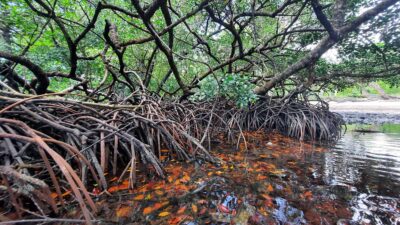Marai village in Papua New Guinea contains about 300 people who live in three hamlets that are situated behind vast mangrove forests. The Climate Resilient Islands programme is helping to document their knowledge about this ecosystem and how they can remain resilient in the face of climate change and its related impacts.
The daily livelihood of the community is based on gardening, using the mangrove forest to collect shells, crabs and fish, and also using the coral reefs for seafood to sell and for their sustenance.
The community’s location within the mangrove forests makes access for services difficult. The rise in sea level, change in weather patterns, population increase, limited sources of income, and the absence of a health worker at the local aid post all add to the challenges of the community.

The CRI programme is a first of its kind for the community, and to be selected for the programme is a milestone for them. Community leaders have commended CRI and continue to stress the importance of the programme to the community during meetings.
Bruno Lali, the chairman of the recently formed Marai Climate Resilience Working Group, stated that,
‘This project is timely and a great opportunity for us … Life has become a challenge for us due to the changes in climatic events that has affected our resources. We will work with the team and see where the project leads to, and how it will benefit us. You have the full support of the community.’

